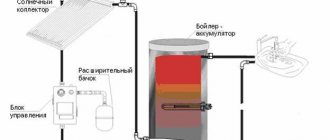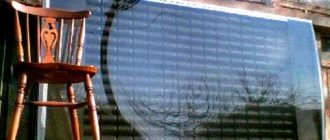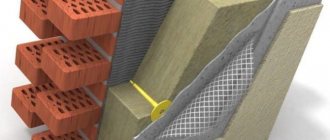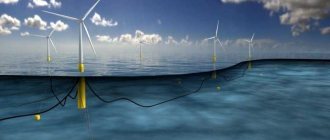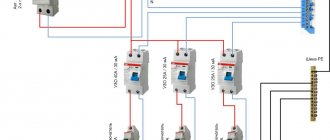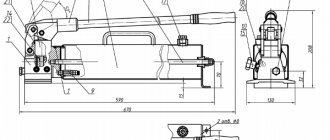There are fewer and fewer traditional energy sources in the world. Oil, gas, and coal reserves are being depleted and everything is heading towards the fact that sooner or later they will run out. If alternative energy sources are not found by this time, then humanity will face a catastrophe. Therefore, research is being conducted in all developed countries to discover and develop new energy sources. First of all, it is solar energy. Since ancient times, this energy has been used by people to illuminate their homes, dry food, clothes, etc. Solar energy today is one of the most promising sources of alternative energy. Currently, there are already quite a lot of designs that allow converting solar energy into electrical or thermal energy. The industry is gradually growing and developing, but, like everywhere else, it has its problems. All this will be discussed in this material.
The sun as an alternative energy source
Solar energy is one of the most accessible renewable sources on Earth. The use of solar energy in the national economy has a positive effect on the environment, since it does not require drilling wells or developing mines to obtain it. In addition, this type of energy is free and does not cost anything. Naturally, there are costs associated with the purchase and installation of equipment.
The problem is that the sun is an intermittent source of energy. So, it requires the accumulation of energy and its use in conjunction with other energy sources. The main problem today is that modern equipment has low efficiency in converting solar energy into electrical and thermal energy. Therefore, all developments are aimed at increasing the efficiency of such systems and reducing their cost.
Here it is - a renewable energy source.
By the way, many resources on the planet are derived from solar energy. For example, the wind, which is another renewable source, would not blow without the sun.
Evaporation of water and its accumulation in rivers also occurs under the influence of the sun. And water, as you know, is used by hydropower. Biofuels would also not exist without the sun. Therefore, in addition to the direct source of energy, the sun affects other areas of energy. The sun sends radiation to the surface of our planet. From a wide spectrum of radiation, 3 types of waves reach the Earth’s surface:
- Light. There are approximately 49 percent of them in the emission spectrum;
- Infrared. Their share is also 49 percent. Thanks to these waves, our planet warms up;
- Ultraviolet. There are approximately 2 percent of them in the solar radiation spectrum. They are invisible to our eyes.
Mini hydroelectric power plants
Homemade hydroelectric power plants are additional DIY alternative energy sources that can be built near a stream or reservoir with a dam. The basis of this design is a wheel that rotates with water flows, and the power of the installation depends on the flow speed.
How to make a design yourself?
To implement this plan you will need the following materials:
- car wheel;
- generator;
- cutting corners and metal;
- plywood;
- copper wire;
- neodymium magnets;
- polystyrene resin.
The wheel is made of 11-inch rims. The steel pipe is cut into four parts vertically, the resulting segments are used to make blades; 16 of them will be required. The blades are attached by welding, and the discs are secured with bolts.
The dimensions of the nozzle correspond to the width of the wheel; it is made from scrap metal. Having given the appropriate shape, the edges are connected by welding. The nozzle must be adjusted in height to regulate the water flow.
Next, the axle is welded and the wheel is installed on it. A generator is made, which is protected by a metal wing from splashes. All elements are coated with paint to protect against moisture and corrosion.
Such a device does not require huge capital investments, but it can significantly reduce energy costs.
Excursion into history
How has solar energy developed to this day?
Man has been thinking about using the sun in his activities since ancient times. Everyone knows the legend according to which Archimedes burned the enemy fleet near his city of Syracuse. He used burning mirrors for this. Several thousand years ago, in the Middle East, the palaces of rulers were heated by water, which was heated by the sun. In some countries, we evaporated sea water in the sun to obtain salt. Scientists often conducted experiments with heating devices powered by solar energy. The first models of such heaters were produced in the 17th-17th centuries. In particular, researcher N. Saussure presented his version of a water heater. It is a wooden box covered with a glass lid. The water in this device was heated to 88 degrees Celsius. In 1774, A. Lavoisier used lenses to concentrate heat from the sun. And lenses also appeared that made it possible to locally melt cast iron in a few seconds.
Batteries that convert solar energy into mechanical energy were created by French scientists. At the end of the 19th century, researcher O. Musho developed an insolator that focused rays using a lens on a steam boiler. This boiler was used to operate the printing press. In the USA at that time it was possible to create a solar-powered unit with a capacity of 15 “horses”.
Insolator O. Musho
For a long time, insolators were produced according to a scheme that used the energy of the sun to convert water into steam.
And the converted energy was used to do some work. The first device that converts solar energy into electrical energy was created in 1953 in the USA. It became the prototype of modern solar panels. The photoelectric effect on which their work is based was discovered back in the 70s of the 19th century. In the thirties of the last century, USSR academician A.F. Ioffe proposed using semiconductor photocells to convert solar energy. Battery efficiency at that time was less than 1%. Many years passed before solar cells were developed that had an efficiency of 10-15 percent. Then the Americans built modern solar panels.
To obtain more power from solar systems, the low efficiency is compensated by an increased area of photocells. But this is not a solution, since silicon semiconductors in solar cells are quite expensive. As efficiency increases, the cost of materials increases. This is the main obstacle to the widespread use of solar panels. But as resources are depleted, their use will become increasingly profitable. In addition, research to increase the efficiency of photocells does not stop.
Photocell for a solar battery
It is worth saying that semiconductor-based batteries are quite durable and do not require qualifications to care for them. Therefore, they are most often used in everyday life. There are also entire solar power plants. As a rule, they are created in countries with a large number of sunny days a year. These are Israel, Saudi Arabia, the south of the USA, India, Spain. Now there are some absolutely fantastic projects. For example, solar power plants outside the atmosphere. There, the sunlight has not yet lost energy. That is, it is proposed to capture the radiation in orbit and then convert it into microwaves. Then, in this form, the energy will be sent to Earth.
Solar Energy Conversion
First of all, it is worth talking about how solar energy can be expressed and assessed.
How can you estimate the amount of solar energy?
Experts use a value such as the solar constant to estimate it. It is equal to 1367 watts. This is exactly how much energy from the sun falls on a square meter of the planet. About a quarter is lost to the atmosphere. The maximum value at the equator is 1020 watts per square meter. Taking into account day and night, changes in the angle of incidence of rays, this value should be reduced by another three times.
Distribution of solar radiation on a map of the planet
Various versions have been expressed about the sources of solar energy. At the moment, experts claim that energy is released as a result of the transformation of four H2 atoms into a He nucleus. The process proceeds with the release of a significant amount of energy. For comparison, imagine that the conversion energy of 1 gram of H2 is comparable to that released by burning 15 tons of hydrocarbons.
Conversion methods
Since science today does not have devices that operate on solar energy in its pure form, it needs to be converted to another type. For this purpose, devices such as solar panels and a collector were created. Batteries convert solar energy into electrical energy. And the collector produces thermal energy. There are also models that combine these two types. They are called hybrid.
Solar battery
solar collector
Hybrid solar panel
The main ways to convert solar energy are presented below:
- photoelectric;
- solar thermal;
- hot air;
- solar balloon power plants.
The first method is the most common. Photovoltaic panels are used here, which produce electrical energy when exposed to the sun. In most cases they are made from silicon. The thickness of such panels is tenths of a millimeter. Such panels are combined into photovoltaic modules (batteries) and installed in the sun. Most often they are placed on the roofs of houses. In principle, nothing prevents you from placing them on the ground. It is only necessary that there are no large objects, other buildings or trees around them that can cast a shadow. In addition to photocells, thin-film or flexible solar panels are used to generate electrical energy. Their advantage is their small thickness, but their disadvantage is reduced efficiency. Such models are often used in portable chargers for various gadgets.
Flexible solar panel
Thermal-air conversion method involves obtaining energy from air flow. This flow is sent to the turbogenerator. In aerostat power plants, under the influence of solar energy, water vapor is generated in the aerostat cylinder.
The surface of the balloon is covered with a special coating that absorbs sunlight. Such power plants are able to operate in cloudy weather and at night thanks to the steam reserve in the balloon. Solar energy is based on heating the surface of the energy carrier in a special collector. For example, this could be heating water for a home heating system. Not only water, but also air can be used as a coolant. It can be heated in the collector and supplied to the home ventilation system.
All these systems are quite expensive, but their development and improvement gradually continues.
Advantages and disadvantages of solar energy
Advantages
- For free. One of the main advantages of solar energy is that there is no cost for it. Solar panels are made using silicon, which is abundant in supply;
- No side effects. The energy conversion process occurs without noise, harmful emissions and waste, and no impact on the environment. This cannot be said about thermal, hydro and nuclear energy. All traditional sources harm the OS to one degree or another;
- Safety and reliability. The equipment is durable (lasts up to 30 years). After 20-25 years of use, photocells produce up to 80 percent of their nominal value;
- Recycle. Solar panels are completely recyclable and can be used again in production;
- Easy to maintain. The equipment is quite easy to deploy and operates autonomously;
- Well adapted for use in private homes;
- Aesthetics. Can be installed on the roof or facade of a building without compromising its appearance;
- Well integrated as auxiliary power supply systems.
Flaws
- Efficiency depends on time of day and weather. Unprofitable to use at high latitudes;
- It is required to accumulate the converted energy;
- The initial investment is high. This is especially noticeable for ordinary people when purchasing equipment for a private home;
- Periodically you need to clean the panels from dirt;
- Requires a large area for placement;
- Some solar cells contain Pb, Cd, and arsenic, which complicates recycling.
Biogas plants
The gas is formed as a result of processing waste products of poultry and animals. Recycled waste is used to fertilize the soil in personal plots. The process is based on a fermentation reaction involving bacteria living in manure.
The best source of biogas is considered to be cattle manure, although waste from birds or other livestock is also suitable.
Fermentation occurs without access to oxygen, so it is advisable to use closed containers, which are also called bioreactors. The reaction is activated if the mass is periodically stirred; for this, manual labor or various electromechanical devices are used.
It will also be necessary to maintain the temperature in the installation from 30 to 50 degrees to ensure the activity of mesophilic and thermophilic bacteria and their participation in the reaction.
Manufacturing of the structure
The simplest biogas installation is a barrel with a stirrer, closed with a lid. Gas from the barrel enters the tank through a hose; a hole is made in the lid for this purpose. This design provides gas to one or two gas burners.
To obtain large volumes of gas, an above-ground or underground bunker is used, which is made of reinforced concrete. It is advisable to divide the entire container into several compartments so that the reaction occurs with a time shift.
The fermentation process with the participation of mesophilic cultures takes up to 30 days, so such conditions are optimal for uninterrupted gas release. Manure is loaded through the loading hopper, and waste raw materials are collected from the opposite side.
The container is not completely filled with the mass, about 20 percent; the remaining space serves to accumulate gas. Two tubes are connected to the lid of the container, one goes to the consumer, and the other to the water seal - a container filled with water. This ensures gas purification and drying, and high quality gas is supplied to the consumer.
Areas of application of solar energy
There are quite a few areas of use. The most popular and common ones are discussed below.
Energy supply for a private home
More recently, such systems were something out of science fiction films. But now many people can find sets of solar modules on the roof or facade of the house. The efficiency of such systems does not yet exceed 10-15 percent. Voltage 12 or 24 volts. But for a private house or cottage this is quite enough.
It is worth saying here that modern panels generate electricity even at dusk and cloudy weather. The battery charge is enough for the dark time of day. In addition, solar panels are connected as auxiliary panels, and if necessary, they are replaced by the main energy system.
Solar collector for heating and hot water supply
Here the sun's energy is converted into heat. Probably many people at their summer cottage have a shower with a metal tank on top. It is heated by the sun and can be washed with heated water. This is the simplest version of such a collector.
But modern systems work much more efficiently. They have an absorbing element that transfers thermal energy to the coolant. There are options with water and air as a coolant.
Collectors most often work as part of hot water supply systems for private houses. The coolant heated in them enters the storage tank (boiler), where it heats the water. The circuit is almost the same as that of an electric boiler. Only in this case electricity is not consumed. Compact systems with a collector can provide free water heating in a house for a family of 3-5 people. We are talking about the autumn-winter period. In winter, the effectiveness of such systems is significantly reduced. In parallel with the installation of such systems, work is being carried out to improve insulation. If winters in your region are not severe, then the collector can be used in winter.
Portable Energy Sources
This type of device is designed to generate electrical energy in the absence of electrical networks. Such portable batteries with the ability to charge from a solar panel are popular among tourists, summer residents, etc. You can read about these devices in the articles:
- Solar battery for laptop;
- Solar battery for phone;
- Solar battery for charging a car battery.
Hubs
This type of device can be called exotic. They can be found among tourists as part of camp kitchens. They concentrate light with a parabolic mirror on a container containing coolant.
Transport
This is still an exotic field of application. But racing competitions are already being held in Australia on solar cars. However, recently designers have managed to increase the speed of such vehicles to 80 km/h. And they are also testing a solar-powered aircraft to fly around the planet.
Wind generators
Alternative energy sources for a private home are renewable resources, which include wind energy. Our ancestors knew how to build mills that used air currents to rotate the blades, but now man has learned to convert them into electricity.
There are several types of wind generators, which differ depending on the basic parameters.
Axis placement
There are vertical and horizontal structures. Horizontal ones provide automatic rotation of the main part to search for wind and have a higher level of efficiency. The equipment of vertical generators is located on the ground, operation and maintenance of this type is simpler.
Number of blades
The following types exist:
- single-blade;
- two-blade;
- three-lobed;
- multi-lobed.
The latter type is rarely used, mainly at low wind speeds.
Blade material
The blades can be rigid and sail-like, but due to the rapid loss of their functionality as a result of sharp gusts of wind, they require frequent replacement.
A wind turbine consists of the following main elements, which can be made by hand:
- The blades, which, as a result of rotation, provide the movement of the rotor.
- A generator that produces alternating current.
- A controller that converts alternating current into direct current, necessary for charging batteries.
- Batteries for storing electricity.
- The inverter converts direct current into alternating current, which is necessary for the functioning of all household appliances.
- A mast to ensure that the blades are raised to the required height with the most active air masses.
Development of solar energy in different countries and its prospects
Alternative types of energy, which include solar, are developing fastest in technologically advanced countries. These are the USA, Spain, Saudi Arabia, Israel and other countries where there are a large number of sunny days a year. Solar energy is also developing in Russia and the CIS countries. True, our pace is much slower due to climatic conditions and lower incomes of the population.
In the territory of the former USSR, the climate for solar installations is most suitable for the climate in Ukraine and the Central Asian republics. However, there is still more talk about development than real action. That is, it has not yet been possible to unlock the potential of using solar energy here. If we talk about the share of solar energy in the market of Russia and the CIS countries, it does not exceed 1 percent. The plans include the construction of several solar power plants. Therefore, the situation can still improve.
In Russia, gradual development is observed and the focus is on the development of solar energy in the regions of the Far East. Solar power plants are being built in remote settlements of Yakutia. This allows you to save on imported fuel. Power plants are also being built in the southern part of the country. For example, in the Lipetsk region.
All these data allow us to conclude that many countries around the world are trying to implement the use of solar energy as much as possible. This is relevant because energy consumption is constantly growing and resources are limited. In addition, the traditional energy sector heavily pollutes the environment. Therefore, alternative energy is the future. And solar energy is one of its key directions.
Conclusion
Network solar power plants are not only environmentally friendly and reliable, but also a promising source of power supply for a private home. And even taking into account the initial investment, due to the increase in electricity tariffs, the payback period for the equipment may well be satisfactory.
Read more about the specifics of operation and optimal power of network solar power plants in the previous thematic article. Discussion of microgeneration in domestic realities is in the profile thread on the forum. In the video - how to make your house autonomous and not pay for electricity.
Subscribe to our Telegram channelExclusive posts every week


